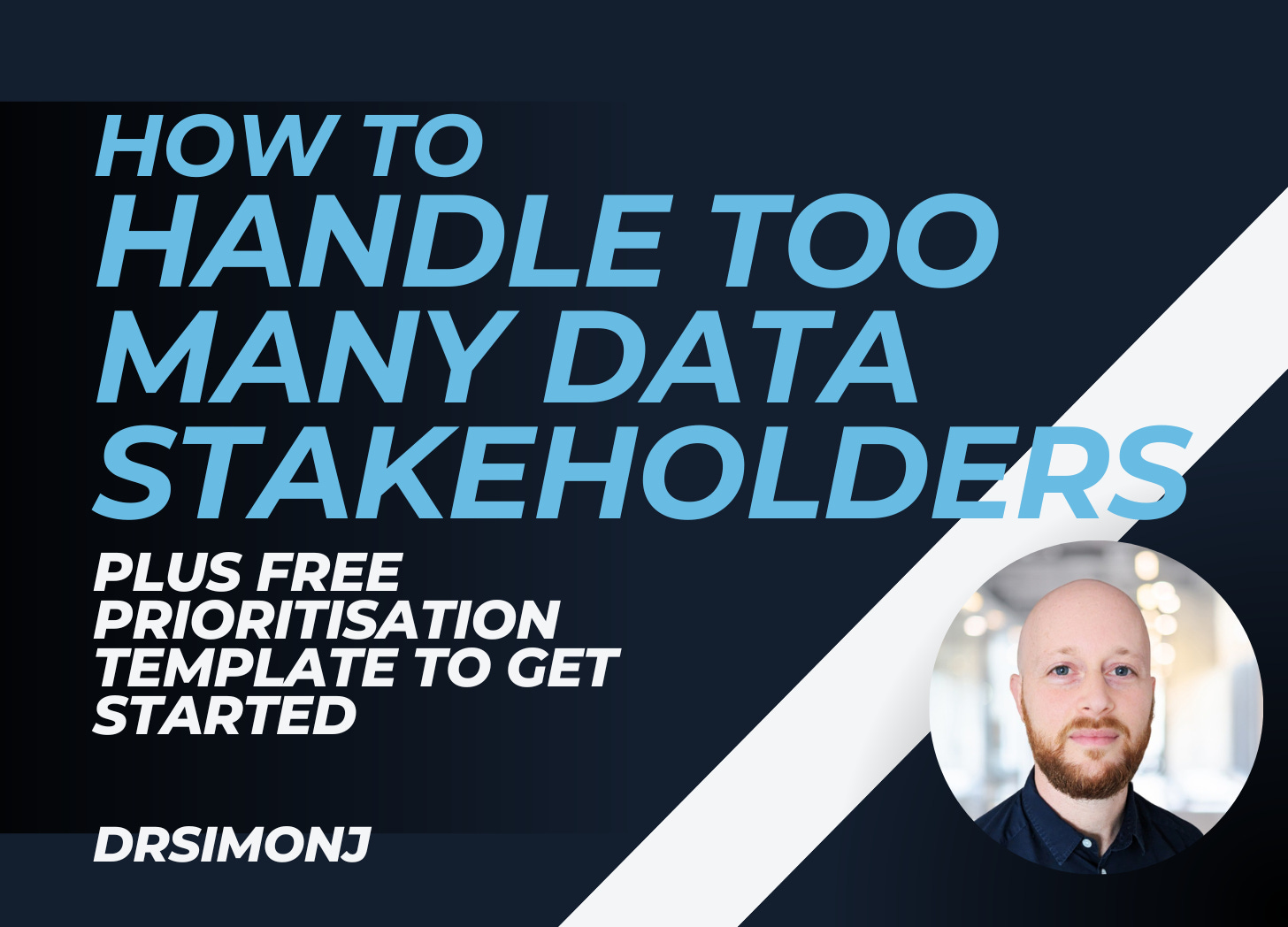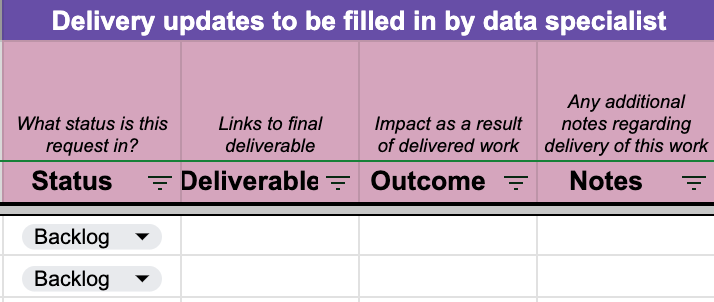How to handle too many data stakeholders
Plus free prioritisation template to get started
I recently posted about this topic on LinkedIn and it seemed to strike a chord with many of you. So I thought it useful to go deeper into what you can do! Let’s dive in.
When I started as a data science and analytics manager I became swamped by stakeholder requests. I’d stepped up to lead the data teams in a department of over 200 people. Many people wanted regular data support but there was about 1 data scientist for every 20 others. And everything started being thrown at me.
I’d be lying if I didn’t share that it quickly became overwhelming. Stakeholders grew impatient as I wasn’t responding to their requests and I started to crumble.
I’ll soon share a solution that the VP of the department helped with me all those years ago and that I’ve re-used many times over. But, before we skip ahead, it’s useful to talk about the problem and how this (or other solutions) help relieve the pressure.
The Problem of Multiple Data Stakeholders
What causes all this pressure? I break it into three key drivers:
Scale
Say it takes 30min a week to gather and prioritise data needs from one stakeholder. Manageable.
New stakeholders and more requests add increasing complexity (more below). Say an extra 15min per stakeholder: +45min for Stakeholder 2, +60min for Stakeholder 3, etc.
Dealing with 10 stakeholders means spending 30+45+60+75+90+105+120+135+150+165min
= over 16 hours, two work days, or 40% of your time, just gathering and prioritising!
To deal with multiple stakeholders, you need a process to manage the sheer volume and complexity.
Competing priorities
What’s with all that extra time for each new stakeholder?
Most of it comes from having to deal with competing priorities. Each stakeholder has their own goals and agenda. Requests from a new stakeholder aren’t just extra items on your backlog. There’s a whole extra set of priorities you need to incorporate.
The hardest part: you need to convince folks who’s work isn’t prioritised that some other stakeholder had higher priority asks. Good luck.
You need a system for standardising request priority in a way that stakeholders can agree on.
Lack of visibility
Worst of all: all that pressure is invisible to everyone but you.
Each stakeholder is going to ask and push as much as they can because… why not? From their perspective, they need a job done and you can do it.
This is where the pain really compounds. You’re under pressure, you’re on edge, and it feels like people just keep piling on the work with complete disregard for your wellbeing.
You need a way to make your workload visible and help your stakeholders empathise with your situation.
Overcoming the pressure
I’m going to share an approach a VP helped me with a long time ago and that I’ve re-used in various forms:
Gather requests in a single space that everyone can access
Include a transparent scoring system to stack-rank all requests
Use senior leadership to break ties or handle conflicts
Track progress and record outcomes in the same space
Do this on a regular cadence that everyone is aware of (e.g., monthly)
To make it a little more concrete, check out or copy this spreadsheet template.
How it relieves ‘Lack of visibility’
The first great thing about this approach is that it makes your pressure visible. Any stakeholder adding a request has to see everything else on your plate. It’s an amazing way to quickly build that empathy and understanding.
By later recording progress and outcomes, stakeholders can also see how requests are translating into business impact. It keeps everyone holding a high bar for entering meaningful asks.
Bonus: this list later gives you the evidence you need to put in requests to get additional headcount and grow the data team. I.e., “Here’s all the data work being asked of us. In the last 6 months, our team was only able to address 20%, and having to leave important work such as XYZ off the table. By hiring an additional ABC data scientists, we can increase that to 50%.”
How it relieves ‘Competing priorities’
Focussing stakeholders on the impact of you doing the work is the first important thing. It funnels everyone into thinking the same way and being mindful of the value you can bring.
Then, a single and transparent scoring system does most of the heavy lifting. Everyone can see and understand how you’ve made your prioritisation calls. If someone doesn’t agree, you can discuss and adjust as needed. Finally, in the case conflicts arise, have senior leadership on standby to break ties.
How it relieves ‘Scale’
Using some sort of tech (a spreadsheet is a fine place to start) means you can scale out request gathering. Having a regular cadence then time-boxes everything and lets you focus. For example, you send out the sheet last week of the month to all stakeholders with a reminder: “Please add your requests for next month in by end of the week. We’ll lock in our priorities the week after.”
Don’t sit still
Take this advice as a starting point but every business and context brings unique challenges. So expect to change things. Furthermore, if you only work like this, there’s a risk of becoming a centralised data service that loses business context and deep relationships.
What matters is that you are able to relieve the pressure and free yourself to do more impactful work.
Give me the summary, Simon!
Alright, summary time.
Are you feeling the pressure of too many data stakeholders? It’s likely you’re facing problems of scale, competing priorities, and a lack of visibility.
Get on top of these with a clear and transparent prioritisation system (here's that template again). Iteratively improve it be sure to use what relief you get to plan a better approach for the future!






